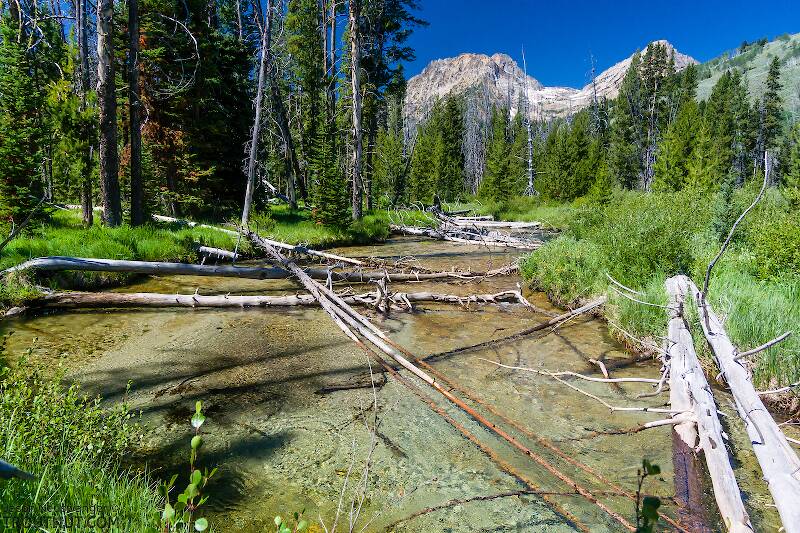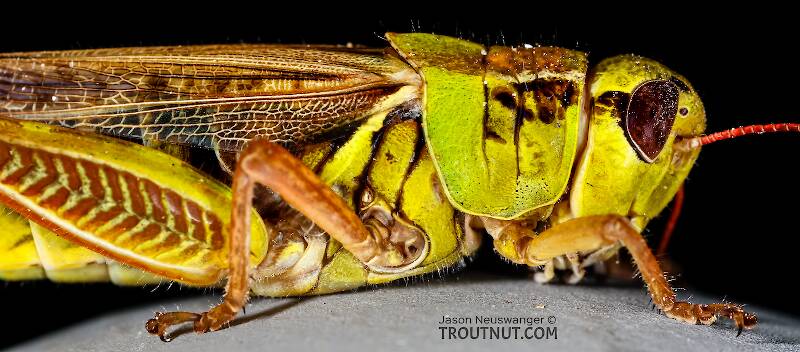
Hex Mayflies
Hexagenia limbata
The famous nocturnal Hex hatch of the Midwest (and a few other lucky locations) stirs to the surface mythically large brown trout that only touch streamers for the rest of the year.
Featured on the forum

This one pretty clearly keys to Kogotus, but it also looks fairly different from specimens I caught in the same creek about a month later in the year. With only one species of the genus known in Washington, I'm not sure about the answer to this ID.

Troutnut is a project started in 2003 by salmonid ecologist Jason "Troutnut" Neuswanger to help anglers and
fly tyers unabashedly embrace the entomological side of the sport. Learn more about Troutnut or
support the project for an enhanced experience here.
Insect Family Acrididae (Grasshoppers)
Grasshoppers are the most exciting terrestrial insects for the trout angler. Sometimes on hot summer days large trout lie along the banks waiting for them.
Acrididae Fly Fishing Tips
Grasshopper imitations should not settle on the water with the gentle, dainty touch of a high-floating mayfly pattern. The proper hopper fisherman takes pride in the splat his fly makes as it touches down.Ernest Schwiebert wrote of grasshoppers in Matching the Hatch:
My experiences with grasshoppers have taught me three lessons valuable in fishing them: the gentle twitch of the fly, bouncing the fly off bankside grass, and dapping or swimming the fly on a short line. All of these tricks are suggest of the natural in the water.
These imitations provide outstanding fishing in many situations, even when the fish have not seen real hoppers. Their large, low-floating, buggy bodies have a universal appeal which makes them excellent searching patterns. Their buoyancy also makes them handy for the trick of using a large dry fly as an indicator for a nymph tied to its hook shank below.
Specimens of Grasshoppers:
1 Adult
Start a Discussion of Acrididae
References
- Schwiebert, Ernest G. 1955. Matching the Hatch. MacMillan Publishing Company.
- Swisher, Doug and Carl Richards. 2000. Selective Trout. The Lyons Press.


